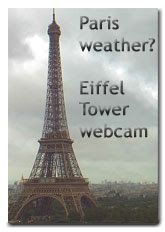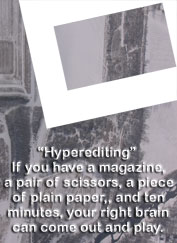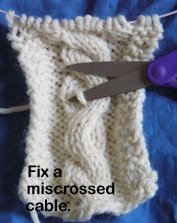.
Vikings! A special exhibit about the Vikings.
They had a map at the beginning, showing where the Vikings came from, and, we think, where they went. It was (alas) not a particularly useful map. Most of the land, and all of the sea, were white, so figuring out what they were trying to convey was very difficult. I did not take a picture of the map.
We'll have to enter the exhibit with words, rather than some sort of broad-idea picture.
We came into a dark area full of treasure.
I was a little surprised to see that so many of the objects in the exhibit were copies. Including this astonishingly complex gold necklace. I mean -- I can see how the owner of the original wouldn't want to let it go visiting, but the amount of skill, talent, and labor to copy it! Wow.
Here's something else that surprised me -- the original this copy follows was made in India, but was found in a Viking grave. I suppose -- Alexander the Great went to India, so it shouldn't be a surprise that the Vikings had things which were made in India. But I was surprised, anyway, that Buddha was found in Uppland, Sweden.
One of the things I liked about this exhibit is that it wasn't all raping and pillaging. I mean -- there were plenty of weapons (including a replica sword you could pick up, to test the heft), but there was more emphasis on daily life than I expected. Combs, and belts, and needles, and keys. And spindle whorls.
If you want to make thread out of fiber, it's really really helpful to twist your fibers around each other. If they just lay there in a pile, a puff of breath will separate them. But if they are twisted together, they become much more than the sum of the individual fibers.
While it is possible to twist fibers just using your hands (and maybe your leg), it's much easier if you have something that spins, so you can use that spin to impart twist to your fibers. A drop spindle consists of a stick, around which you will wind the spun fiber, and a weight, which fits snugly around your stick, and provides momentum to keep your spindle spinning. (Here's a video about using a drop spindle. I confess I only watched the very beginning of this video....)
The weight that keeps your stick spinning is often a flat-ish disk called a whorl.
Some of these objects are spindle whorls. (I doubt the one in the upper left is -- it's too big and appears to be too heavy. You don't use a drop spindle to make rope......)
I did think to capture the descriptive info (probably because I didn't think that big one was actually was a spindle whorl). I didn't see how we were supposed to relate the individual objects above to this info below. In some cases I feel comfortable I know which one was which, but looking at the above, which one is lead? I don't see one I think matches the image below....... These seem to be the original objects; no note that they are copies.
I failed to capture the info about this belt. I was interested because we learned about the metal found along Hadrian's wall that is believed to have been on belts. Metal bits at the pointy end of the leather, and metal bits holding the length-wise part of the belt stiff so it doesn't roll. This belt clearly has both of those sorts of metal bits.
I don't know if this is a copy. The leather looks really new...... I'm surprised by the green -- I would think that is harmful to the metal, and they'd want to stop it.
Did you notice the comb, attached to the belt? This is a fancy one!
I'm glad for this interesting info -- I wouldn't have known about the different rules with locks and without....
I was puzzled by the shapes of the keys. I'd never seen any keys shaped like these.
I wonder why this is bent.....
The woman in the image below is holding a key similar to the one in the image above.
I did not know where the word "window" came from........
My husband's paternal grandpa was born in Denmark. As we walked through the exhibit, he had a sense that he was looking back at his people. It surely makes things seem more compelling, when we have that feeling of connection to them. Like my response to Lucy, a couple of days ago....
I had not seen a large embroidered piece from Scandinavia before.
It's amazing to me that a woolen piece like this could survive
1000 years in a non-desert climate.
I think this was a photograph of the tapestry, displayed in Chicago, rather than an actual tapestry (even if a copy)......
This woman is holding a drop spindle. You can see the spun thread wrapped around the stick, above the whorl.
When I look at pre-industrial-revolution textiles, I am always struck by
the fact that every thread (every single thread) was hand spun. Every
thread her clothing was woven from, every thread that stitched her
clothing (decorative stitching and utilitarian stitching). All
hand-spun. Wow. Speaking of labor-intensive...... We have it so easy, nowadays, that most of us can't even remember how hard we used to work, just to stay alive.....
More combs. A lot of time and attention went into making them.
Closeup -- showing decoration on the middle one, and the difference in tooth lengths on the top one. Despite working harder than most of us can imagine just to stay alive, the people who made these combs had time (and took the time and trouble) to do the decorating. To make the teeth taper. To make the shapes of the combs appealing (and comfortable in the hand, I bet).
Shoes, and needles. Love the way the big toes are so clearly evident...... These shoes really look like they have been worn. I wish I'd gotten the description, to know if they are old, or modern. My sister-in-law has made shoes that in my memory are rather like these....
Again I failed to capture the descriptive info. Decorative items, though perhaps also with function. I think the one at top left pins a shawl together, and I *think* I can imagine how it works (given the pin slides around the ring, and the ring has a break in it wide enough for the pin to rotate through the break)....
Want to guess? I mean -- yes, they are bones, but what are they for?
!!! I would never have guessed!
I did get the descriptive info on this. It looks like a charm bracelet to me (though the "bracelet" part is sort of misshapen?). It is described as an amulet ring, and is from Öland, Sweden (no date specific to this item is given).
Of course they didn't leave out the pillaging and burning entirely (and there was some discussion of slavery, too).
This next item does not photograph well, alas, but it's a "ghost ship" (my words, not theirs). A ship given (tenuous) form by suspending its nails, in 3D, where they would have appeared in the real ship. Yards and yards of very fine transparent line, suspending nails in the shape of a ship.....
The ship formed by the nails above (and long-gone wood) would have looked something like this.... What a graceful shape....
I saw a program on PBS, not long ago, where people took a boat very much like this one, to go from Denmark to Ireland. It was cold, the wind did not blow when they needed it and did blow when they did not, it rained.... Definitely one of those programs I was interested to see, but did not want to participate in the making of. !!! Even with modern clothing those people were pretty darn uncomfortable. I'm sure, long ago, I would have been one of the people who stayed home, rather than going adventuring!
A board game.
I did not get the descriptive info on these tiny but embellished individuals. I believe they were less than 1.5" tall. I don't know what their purpose was. If they existed for their own sake, or if they decorated something(s) else?
I did get the description on this. There is speculation that polished rock crystal was used as magnifying "glasses"
I hope, if I have this upside down, one of you rune-readers will let me know?
Mold, and a metal item made in the mold.
I did not get the description on this. I am guessing it is carved and painted stone.........
My brother and sister-in-law have carved stones like this. Big, and heavy, but not quite as big as this one, which is over 6.5' tall.
I wonder if these are modern or old. I wonder where all the beads came from in the originals. Given that Buddha we saw near the top of this post, it wouldn't surprise me to learn the beads came from all over the world.
I wonder about the coins, too. They look pretty similar, though, so maybe not from all over. Or maybe only the silver was from all over, and the coins were all made in one place?
This is for you, bro.
I saw a sign in the Field Museum, on a donation box, that said entry fees only provided about 20% of the funds necessary to run the museum.
There are multiple place to eat inside the Museum. There are shops everywhere. Outside the special exhibits, near the dinos, and a big one near one of the exits.
Here are a pair of items from the Viking gift shop. Cute. But perhaps completely historically inaccurate?
.
Saturday, August 29, 2015
Subscribe to:
Post Comments (Atom)





















































2 comments:
Vikings kind of fascinate me so this would be really interesting. Did you buy any of those little -- what ARE they? Frames? in the gift shop?
I bet you would like that exhibit. So many different kinds of things were shown.
Those things with the baby faces in the last image are bibs. :-)
No, I did not buy any. :-) They did have socks, with floral designs that one could pretend were embroidered. But I couldn't find the fabric content, and I don't wear plastic socks.....
I bought some postcards, and that was it. :-)
Post a Comment